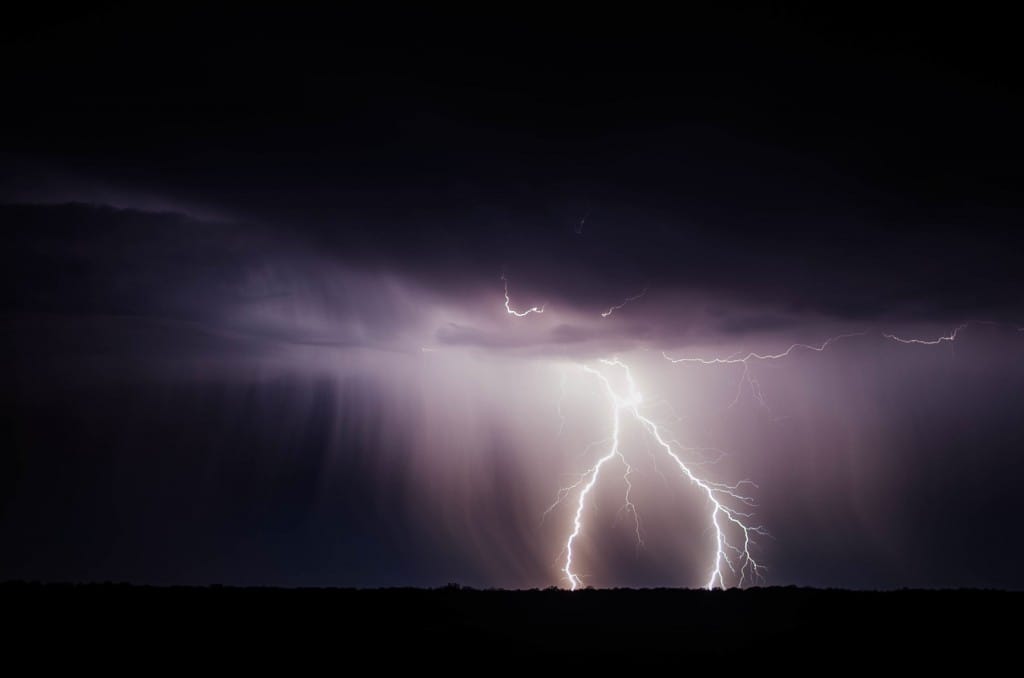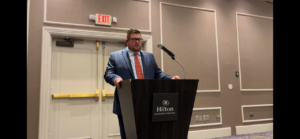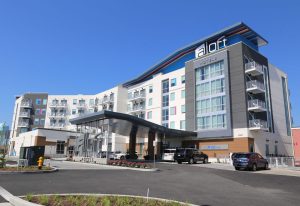Lightning protection systems have been around for more than 100 years, dating back to the many scientific studies of Benjamin Franklin. Lightning has current levels in excess of 100,000 or more amps, temperatures reaching 50,000 degrees Fahrenheit, and speeds about one-third the speed of light. Lightning rods (also called air terminals) can protect your home or building from damaging and deadly strikes during a storm.
Why do I need it? Lightning can cause considerable damage to a structure and can even cause injury or death to a person if it cannot find a safe path to the ground. In the event of a strike, lightning will use any available conductor to find a path to the ground including electrical lines, phone, cable, computers, water pipes, or even the building itself. It will jump from object to object in the structure through side-flashes, causing fires or explosions. Electronics and appliances are also at risk of malfunctioning if a building is hit with lightning.
What are the odds of a lightning strike? There are satellites that monitor lightning activity to provide charts and statistics. At any given time, there are about 2,000 thunderstorms happening around the world. Earth encounters 100 lightning flashes per second and the United States experiences more than 40 million lightning strikes each year.
Won’t the lightning protection system attract lightning? No, but it also can’t prevent a lightning strike. It basically intercepts the lightning strike and provides a safe path to the ground for the electrical current. Lightning is unpredictable and will strike anywhere it pleases, whether you have protection or not. Having taller buildings or large trees around doesn’t matter, lightning can strike any low-lying home or structure and even the ground. Side-flashes often occur when lightning strikes nearby, so even if your structure isn’t hit directly, lightning protection can prevent damage from these side-flashes.
Do all buildings need lightning protection? Few structures are required to have lightning protection, but any type of home or building can have it installed. Many well-known attractions are fitted with lightning protection, such as The White House, the Statue of Liberty, NASA, the Department of Energy, and many more. One of the most famous examples of lightning protection success is the Empire State Building in New York City, which is struck by lightning about 100 times every year. Other structures that typically have lightning protection include schools, hospitals, and airports.
Does it need to be maintained? Lightning protection should last a lifetime, though routine inspections every few years are required. If there are any renovations, additions, or changes to your home or building then the system should be checked in case it’s in need of updates.
Who can install it? Only someone who is highly specialized in installing this type of equipment. Lightning rods have their own NFPA standards that need to be met. In-depth training and knowledge of multiple codes is necessary. If lightning protection is improperly installed, it certainly won’t do what it’s supposed to and can be incredibly dangerous.
Is it expensive? It’s difficult to estimate how much a lightning protection system will cost as it varies depending on size, location, construction, and other factors of the building.
What does a lightning protection system look like? Rods are placed in intervals on the highest and most exposed parts of a home or building. They become the most likely point where lightning will strike. Those rods are connected to conductor cables that run along the tops and edges of a roof and down the building that provide a safe path to the ground rod, which is buried deep into the earth around the protected structure. Modern lightning rods are much smaller than they used to be and can be installed to blend in with architectural features. Design professionals can even review protection plans prior to construction to find the best way to hide the system and maintain the aesthetics of a building.






